Useful tips for home recordings:
How to Record Yourselves from Noise addicts

My page about History of Audio Technology and Electroacoustic Music has been updated.
Sorry, currently the page is in italian only. It will be translated as soon as possible
Ho finalmente aggiornato la pagina dedicata alla Cronologia della Tecnologia Audio e della Musica Elettroacustica.
Mancano ancora un po’ di cose, comunque è quasi completa e consultabile, con molte immagini, link di approfondimento e link per ascoltare via You Tube le composizioni citate.
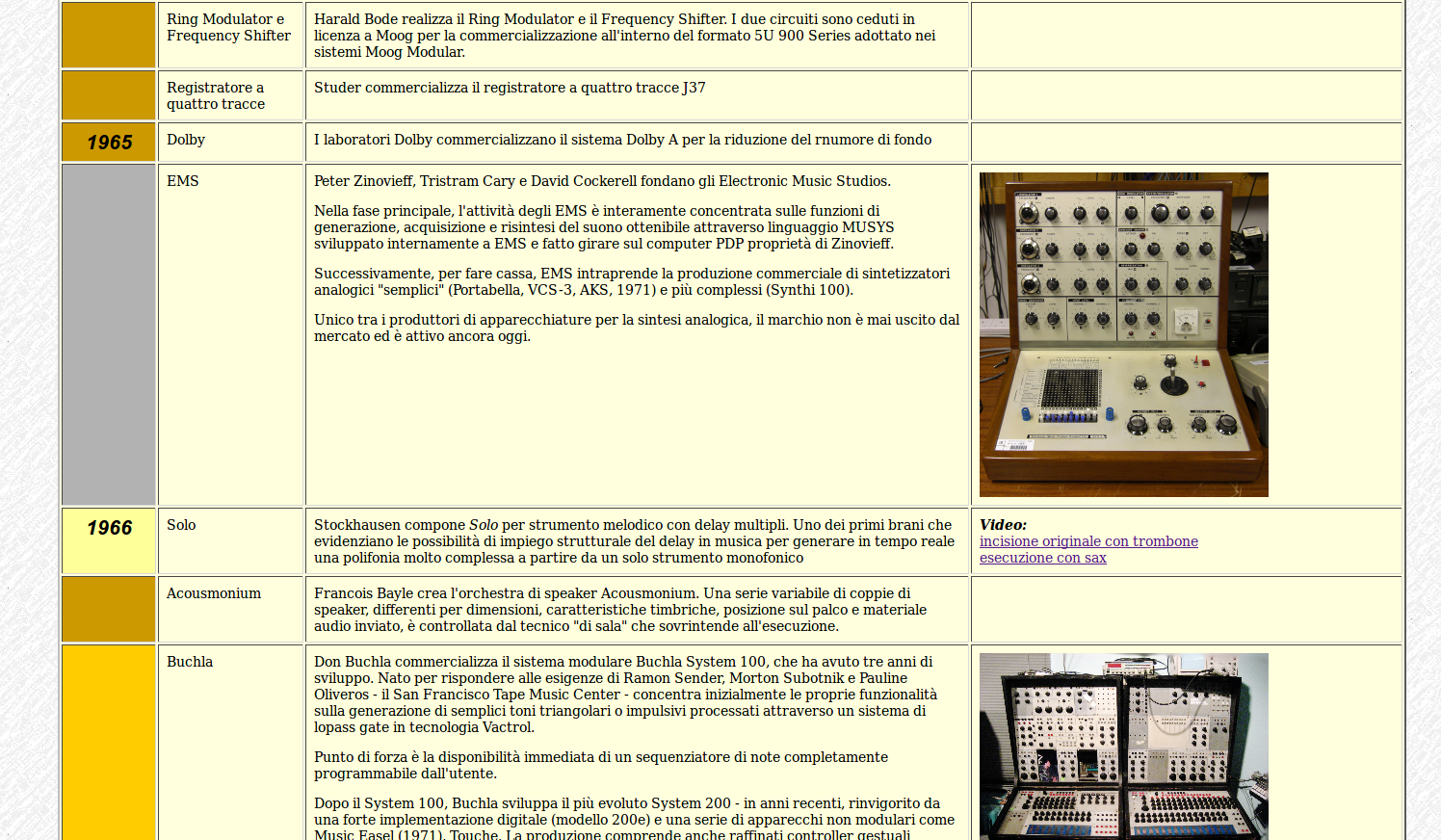
A singer within the St. John’s Baptistery, in Piazza dei Miracoli (Pisa, Italy), uses the acoustic qualities of the architecture to turn a mono-melody into harmony.
The reverberation time of the Baptistery can reach up to 15 seconds, offering a vast space of time to handle sustained notes, so a single singer can create harmony superimposing new notes on the reverberation of the previous ones.
A composition written for the Baptistery in Pisa is Ian Costabile’s Earth and Sky Voices (here on You Tube). There is also an electroacoustic composition: SiderisVox by Leonardo Tarabella performend here on 2006. You can find some notes here. Unfortunately I could not find an audio extract.
Some details about the video: the tourist speaking thinks that singer has come by chance, but he does not know that acoustics demonstrations are very frequent. He also speak about “echo”, but of course the correct name of the sound effect is reverberation.
Links to other post about this topic are below the video.
UPDATE 2023
The IRCAM Prepared Piano 2 is an IRCAM production in collaboration with UVI. This is a VST that simulates both the piano and the prepared piano, based on more than 12,000 high quality samples for a library of approximately 18 Gb. In addition to various types of piano, 45 types of preparation, extended techniques and effects are emulated, all well described at the link above. Price $ 209.
Another online drum machine based on alphanumeric characters.
Uppercase and lowercase letters are the same; space make a rest. You cannot change the metro or download a file (you have to record the loop).
Be careful to use a multiple of 4 characters if you want your fanatic 4/4.
Eerie sounds from the edge of space were recorded for the first time in 50 years aboard a NASA student balloon experiment.
Infrasound microphones captured the mysterious hisses and whistles 22 miles (36 kilometers) above the Earth’s surface last year. Daniel Bowman, a graduate student at the University of North Carolina at Chapel Hill, designed and built the equipment. The instruments eavesdropped on atmospheric infrasound, or sound waves at frequencies below 20 hertz. Infrasound is below human hearing range, but speeding up the recordings makes them audible.
Bowman, who has been building and launching his own high-altitude balloons since high school, hopes that his experiment will revive interest in atmospheric infrasound. “There haven’t been acoustic recordings in the stratosphere for 50 years. Surely, if we place instruments up there, we will find things we haven’t seen before,” he said.
Here is the recording
Fonte/Source: Live Science
(((.foundsoundscape.))) is “a live radio collage of foundsound places to underscore your personal spaces”. It’s curated by Janek Schaefer and features 1000 different locations, by 100 different artists.
Foundsoundscape was inspired by the very first Digital Radio station in the UK, that simply played a recording of a rural location. Radio you could just leave running to add a peaceful ambience to your environment indoors. It heralded a new media paradigm, as digital broadcasting offered more capacity than requred for the first time, and that space needed filling. At the same time on TV, Channel 4 was broadcasting Big Brother live 24hours, and at night I loved to tune-in my analogue TV sets all over the house, and the shed, so I could hear the housemates gently sleeping as I worked through the night. Since then infomercials, and gambling TV have taken over, and I greatly miss that sense of real-time space, that does not demand your attention. Foundsoundscape quietly underscores your environment, by creating new ones from others.

The owl fly in perfect silence.
Inaudible even in headphones, despite passing a few centimeters from a large set of microphones in an already silent test environment. Its wings move the air without generating any spikes.
Please, note: NOT “any spikes at audible frequencies”, just no spikes. The record is a almost straight line (see the second video).
Taken from the BBC Two Natural World program. Reported by Lucia.
In the first video there is the essence of the experiment.
Here we have a more complete video with some comments.
Ryan Maguire, Ph.D. student in Composition and Computer Technologies al Center for Computer Music dell’Università della Virginia, ha fatto una analisi accurata su ciò che l’algoritmo di compressione dell’MP3 elimina. Il tutto nell’ambito di un progetto chiamato The Ghost In The Mp3 il cui fine è, in realtà, quello di ricavare materiale compositivo da quelli che si possono definire gli scarti dell’MP3 (quella linkata è la pagina principale, ma vedi qui per discussione dettagliata ed esempi).
Degli effetti della compressione MP3 abbiamo già parlato qui, facendo notare che, a livelli di compressione maggiori di 192 kbps (cioè da 128 in giù), la perdita di frequenze alte sia sensibile anche in brani rock, cioè non particolarmente raffinati. Sull’algoritmo di compressione MP3 vedi “La Compressione MP3“.
L’analisi di Maguire, però, è più profonda della mia e mette in luce perdite che potrebbero essere significative sull’intera estensione della banda. La sua analisi è concettualmente semplice. In pratica, ha confrontato gli spettrogrammi di un brano prima e dopo la compressione lavorando, ovviamente, non sulle immagini degli spettrogrammi, ma sui dati numerici ricavati dalle analisi FFT che si eseguono per realizzare le immagini.
Ecco, per esempio, tre spettrogrammi relativi al brano di Suzanne Vega “Tom’s Diner” che è per voce sola ed è spesso utilizzato come test degli algoritmi di compressione. Le prime due si riferisco a prima e dopo la compressione a 128 kbps e non mostrano differenze visibili. La terza è lo spettrogramma differenziale ottenuto confrontando i dati binari e mostra che delle differenze esistono (click immagini per ingrandire).
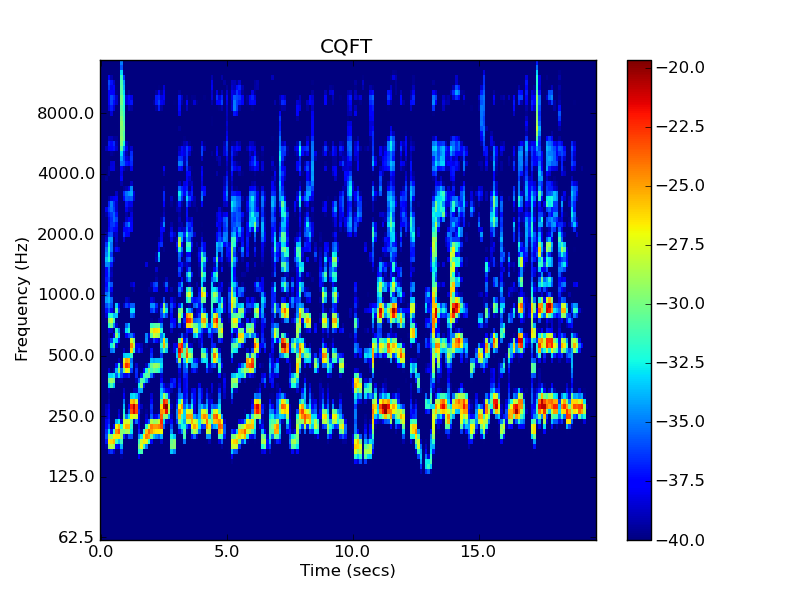 |
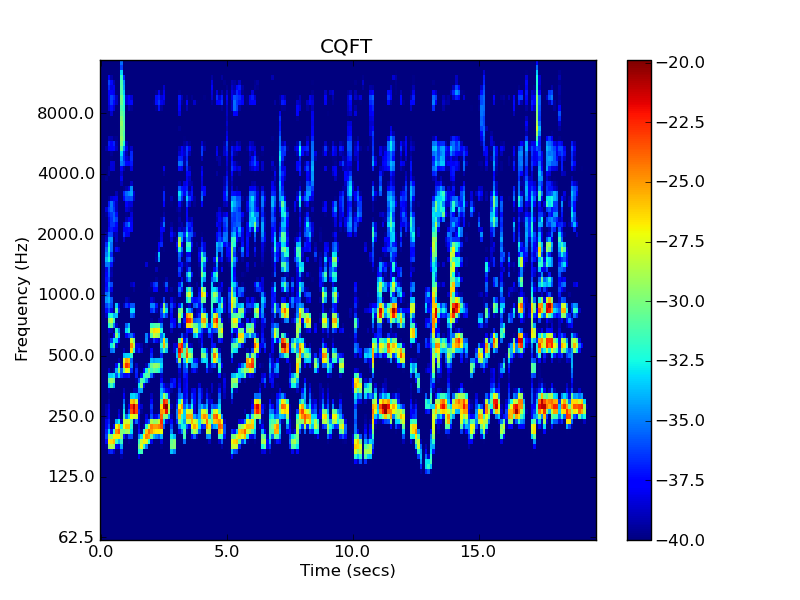 |
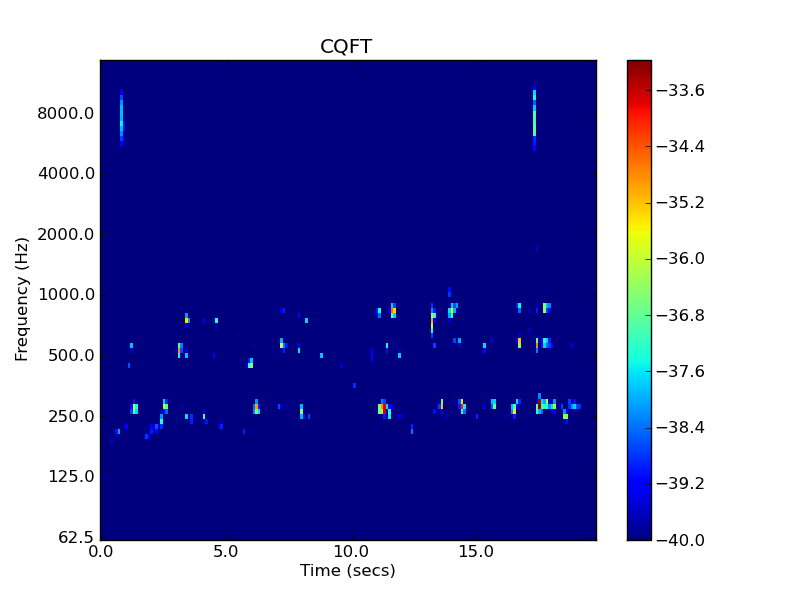 |
A prima vista, questo risultato non mi colpisce: ho già mostrato in alcuni post che a 128 kbps c’è una differenza sensibile (vedi alla fine del post in “potrebbero interessarti anche”) e l’MP3 è una compressione con perdita, quindi qualcosa deve pur levare.
Quello che però risulta da questa comparazione è che la perdita non si limita alle alte frequenze, ma si estende su tutta la banda. Anzi, è più visibile nella parte medio-bassa della banda acustica e in alcuni punti è anche piuttosto forte. Ora bisogna capire che cosa effettivamente viene tolto, cioè quanto siano significativi quei blob che si vedono nella terza immagine.
Qui sotto potete ascoltare i tre esempi audio da soundcloud: originale, compresso e differenziale. Alzando un po’ il volume si nota come il differenziale contenga chiaramente anche una parte del cantato. Considerando che il bit rate è 128, non è una scoperta, però è un risultato interessante perché è il prodotto di una comparazione numerica precisa, non “spannometrica”.
Ora la discussione può essere impostata in modi molti diversi.
Da un punto di vista, per così dire, filosofico, è chiaro che qualsiasi riproduzione dovrebbe essere vietata e che la musica dovrebbe esistere solamente live. Considerando che le frequenze presenti negli spettri strumentali vanno ben oltre i 20.000 Hertz (vedi il post “C’è vita oltre i 20.000 Hertz!“) e che qualcuno sostiene che, anche se non le sentiamo, queste componenti hanno un qualche effetto su di noi (il che, imho, è tutto da provare), la musica registrata con gli attuali standard e riprodotta con gli attuali impianti è ben diversa dalla sua esecuzione live.
Partendo, invece, da posizioni più, diciamo, utilitaristiche, si tratta di capire quanto valore abbia la riduzione della dimensione dei file che l’MP3 assicura rispetti a ciò che va perso e qui la valutazione dipende molto dalle abitudini di ascolto di ciascuno di noi. Personalmente tengo in MP3 a 320, quindi con compressione limitata, la musica a cui tengo meno e in FLAC (compressione senza perdita) ciò che mi interessa di più, ma ho anche un bell’impianto e generalmente non ascolto con cuffiette o simili.
Invece, pur non comprando quasi più CD, ma solo da negozi online, ormai da tempo non compro musica che mi venga venduta in MP3. Come cliente, esigo sempre una registrazione non compressa o compressa senza perdita.
Con il termine “Virtual Acoustic Modelling” si intende la ricostruzione computerizzata dell’acustica di un ambiente. In pratica si realizza un modello acustico di un ambiente mediante il quale è possibile elaborare dei suoni e ascoltarli con la riverberazione e la risposta in frequenza di quell’ambiente.
Se l’ambiente è esistente e accessibile, la cosa è relativamente semplice perché è possibile rilevare la risposta all’impulso di quel luogo. Poi si esegue una convoluzione fra un qualsiasi suono privo di riverberazione (tipicamente registrato in camera anecoica) e la risposta all’impulso per immergere il suono in quell’ambiente (per una spiegazione più dettagliata, vedi Graziani, Riverbero mediante Convoluzione).
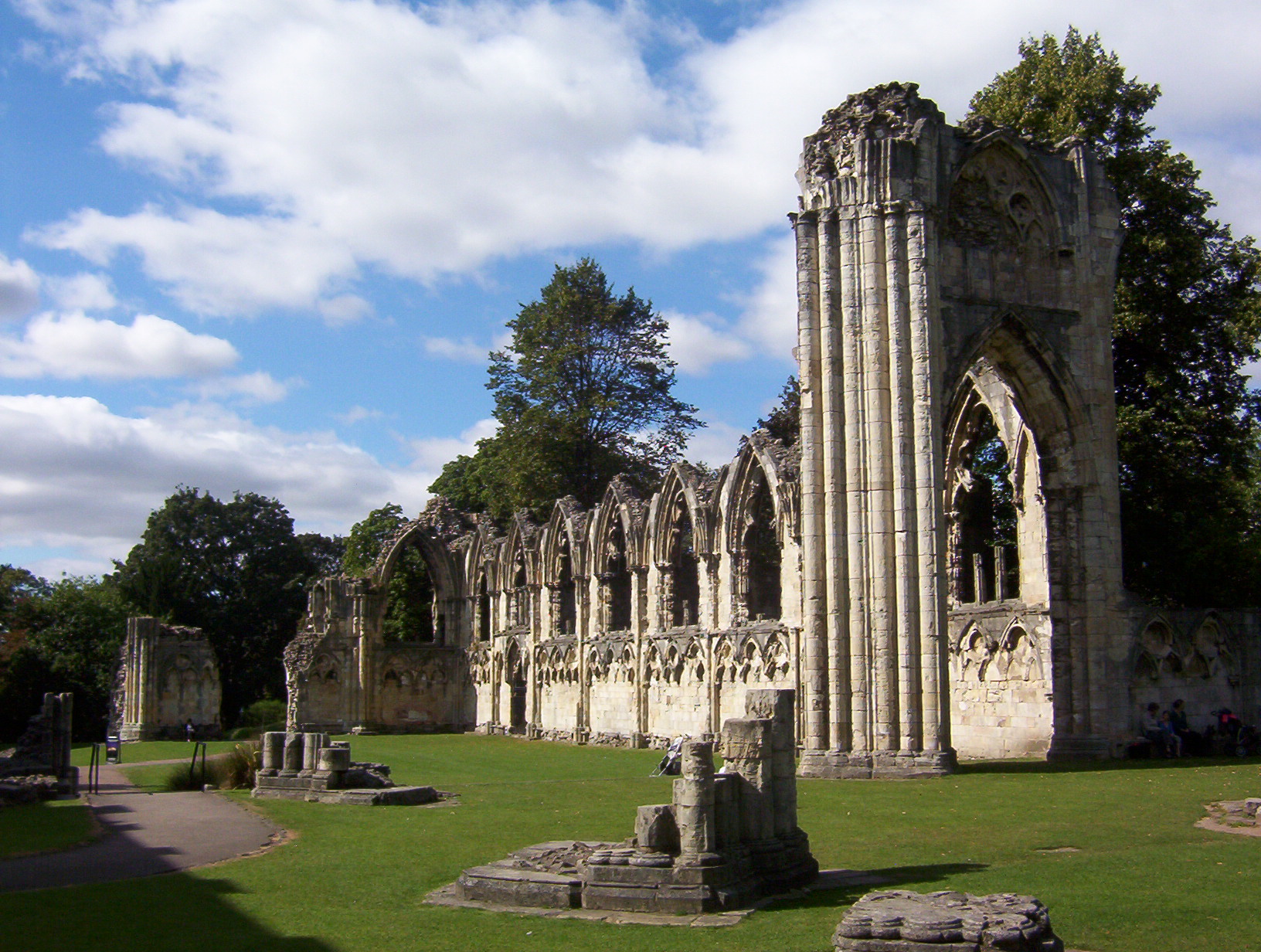 La difficoltà nasce quando l’ambiente in esame non è più accessibile, per esempio è stato distrutto o è cambiato radicalmente nel corso degli anni, come nel caso dell’Abbazia di St. Mary a York, della quale rimangono solo rovine (immagine ingrandibile a lato). In questo caso è necessario stimare la risposta all’impulso dell’edificio originale, prendendo in considerazione la sua architettura in termini di volumi e materiali, servendosi di un software di simulazione per calcolare le riflessioni e l’assorbimento a varie frequenze.
La difficoltà nasce quando l’ambiente in esame non è più accessibile, per esempio è stato distrutto o è cambiato radicalmente nel corso degli anni, come nel caso dell’Abbazia di St. Mary a York, della quale rimangono solo rovine (immagine ingrandibile a lato). In questo caso è necessario stimare la risposta all’impulso dell’edificio originale, prendendo in considerazione la sua architettura in termini di volumi e materiali, servendosi di un software di simulazione per calcolare le riflessioni e l’assorbimento a varie frequenze.
Questo progetto viene portato avanti da un team dell’Università di York. In questa pagina il progetto viene descritto in dettaglio, con alcuni esempi.